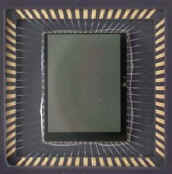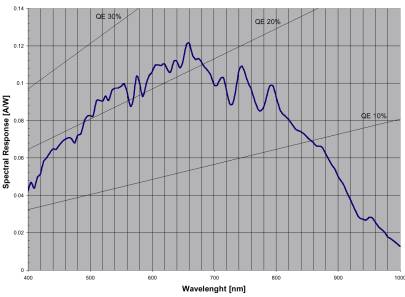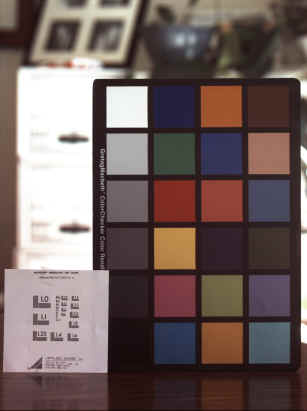SI-6600- M & RGB MegaCamera™
6.6 Megapixel, 10-Bit, 40MHz
Ultra-High Resolution Portrait Digital Camera
Silicon Imaging Inc.

![]()
Silicon
Imaging
is proud to continue its
innovation in ultra-high resolution machine vision camera.
Driven by the growing demand for consumer Digital Still Cameras,
CMOS sensors are continuing to break technical barriers and surpass the
performance characteristics of CCD’s in many photonic, imaging and
consumer applications. By
utilizing a single highly integrated CMOS device, which incorporates
Megapixel sensing areas, timing generation, signal processing and high
bandwidth outputs, Silicon Imaging has developed a very compact,
low-power, ultra high speed Megapixel digital camera system.
2208
x 2960 Megapixel Imaging - Ultra Resolution
The
SI-6600 is an all-digital CMOS camera that delivers 6.6 Million pixels of
resolution and is capable of running at 6 frames/second at its full 2208 x
2960 resolution. The entire
package is only 45 x 52 x 50mm (33 x 40mm x 22mm in PCB) and is small
enough to placed
on a robot for semiconductor machine vision inspection or placed in an
outdoor housing for remote surveillance.
It is ideal for live visualization of documents or films and
scanning of biometrics for handprint or facial recognition.
10-Bit
Pixel Clock Sampling – Sub-Pixel Accuracy
The
SI-6600 MegaCameraä uses 10-Bit digitizers to sample the pixel
data. Converting the pixel
data directly to digital at the sensor head eliminates pixel-sampling
jitter and enables accurate sub-pixel metrology, image analysis and
improved live video reconstruction. A
programmable clock which ranges from 7~40MHz allows for trade-offs in
speed versus exposure time and lower noise.
200
FPS - Windowing & Subsampling
Ideal for
object tracking and high-speed Motion analysis, the SI-6600 is capable of
generating imagery at over 200 frames per second by reducing the size of
the readout image (ex. 100x100).
This windowed Region-of–Interest (ROI) can be moved dynamically,
creating an entirely electronic pan/tilt/zoom function within the camera
field-of-view.
USB2.0
Bus-Powered – 40MB/sec Transfers
For
low-cost and portable connectivity, with data transfer rates up to
40MB/sec, the SI-6600U provide convenient capture using the High-Speed
480Mb/sec USB 2.0 interface. It is a bus-powered unit, consuming less than
500mA at 5VDC and will operate without any external power supply. The
precision-machined C-mount housing includes an integrated tethered USB
cable. For OEM board level configurations, two General Purpose Outputs are
accessible; Pull-Up and pull-down driven transistors to be used to control
light sources and switches
Microsoft-XP™
Live Mode Driver -
Fast capture
For
applications which require a combination of high-resolution and streaming
high-frame rate video images, Silicon Imaging has developed a custom
driver which can request and capture double buffered images at the driver
level. This method enables
immediate request to camera for next image without user level software
intervention. The
double-buffers allow one image to processed by the host PC, while another
image is being readout from the camera and filled into the user allocated
memory space.
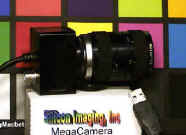
FEATURES
· 2208
x 2960 Resolution (6.6Million Pixels)
·
Rolling Shutter, Progressive scan
·
1” Imaging Format , 3.5um Square Pixel
· Windowing
and Subsampling
· 10
Bits per Pixel, 7~40MHz Sampling
·
High Speed Readout (6 ~ 200FPS)
·
Region-of-Interest (ROI) windowing
· Gamma
& NDR Readout
·
Programmable Gain, Offset, Clock, Exposure
·
External Clock Synchronization (option)
·
Monochrome & Color Bayer RGB Models
· 5VDC
Low Power, Small Package
· C-Mount Housing or PCB versions
· USB 2.0 High-Speed Interface
|
SI-6600 USB2.0 MegaCamera Specifications |
||||||||||||||||||||||||||||||||||||||||||||||||||||||||||||||||||||||||||||||||||||||||||||||||||||||||||||||||||||||
6600
Sensor
A/D
Conversion & Pixel Clock Synthesizer
Digital
Video Output
|
USB2.0 High-Speed Interface & Control:
Power
Mechanical
Spectral
Response Curve (Monochrome)
|
|||||||||||||||||||||||||||||||||||||||||||||||||||||||||||||||||||||||||||||||||||||||||||||||||||||||||||||||||||||
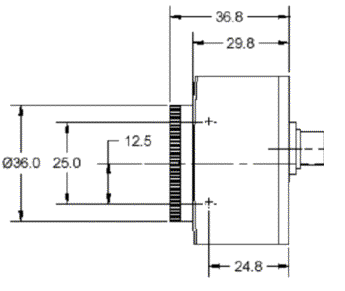
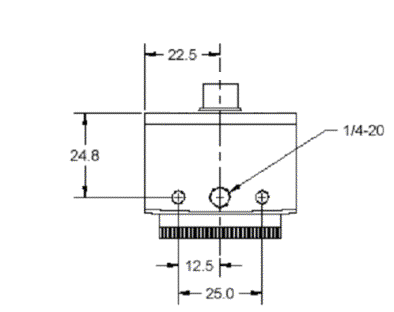
SI-6600 Cameralink Manual (PDF 1.5MB)
6.6
Megapixel CMOS Image Sensor
The
MegaCamera SI-6600 utilizes a proprietary portrait style 6.6 Million pixel
high-speed CMOS image sensor. Each pixel is 3.5um square, ideal for image processing, and
the entire array fits the 1” format for flexible optic choices.
This reduction in process geometry allows for both an increase in
transistors and fill factor without compromising performance, plus offers more
advanced readout controls, greater speeds and lower power dissipation.
This new sensor technology offers a more responsive pixel design with
added circuitry for increased dynamic range, greater sensitivity, decreased
fixed pattern noise and low dark current for
long exposure applications. Unlike
CCD, which leak charge to adjacent pixels when the registers
overflow (blooms), the SI-6600 provides inherent
anti-blooming protection in each pixel,
so that there is no blooming.
The array has 2210 pixels on a line and 3002 rows, which result in a near 3:4 portrait aspect ratio. The SI-6600 outputs 2208 x 2960, using 42 rows for interframe blanking. The image can be rotated 90-degrees to obtain a 4:3 image. In addition, by using the windowing feature, a 16:9 aspect ratio (eg. 1280x 720) or 1:1 aspect ratio (1024 x 1024) are available. At smaller ROI sizes (eg. 128 x 128) frame rates in excess of 1000fps.
The
SI-6600 MegaCamera achieves high data rates by simultaneously accessing two
adjacent pixels at a time and reading them out sequentially.
These pixel values feed thru a gain & offset amplifier and then to
on-board dual 10-Bit A/D converters and placed onto a 12-bit data bus for
transmission. The entire
imager field of view can also be readout using subsampling.
In this mode, 2 pixels are readout and a group of pixels are skipped.
As fewer pixel are output, the frame rate increases
In
a color model, a Bayer filter covers each of the pixels to produce a pattern of
values that represent the color information, which must be processed and
interpolated to obtain an RGB value per pixel.
The 12-bit output format from the camera is identical for monochrome and
color models.
The camera sensor is light
sensitive between 400 and 1000 nm. The peak QE * FF is 22.5% approximately
between 500 and 700 nm. In view of a fill factor of 35%, the QE is thus close
to 70% between 500 and 700 nm.
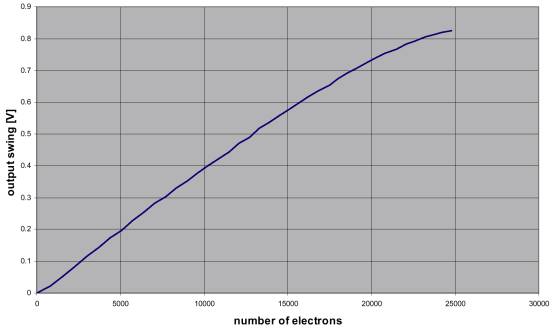
The figure above shows the pixel response curve in linear response mode. This curve is the relation between the electrons detected in the pixel and the output signal. The resulting voltage-electron curve is independent of any parameters (integration time, etc). The voltage to electrons conversion gain is 37 µV/electron.
10-Bit Digital Sampling System
A
10-Bit Analog-to-digital (A/D) converter samples each pixel value and quantizes
it into 1024 levels, as it is clocked out of the sensor. Pixel clock sampling ensures precise measurement of the
photonic charge without the jitter and sampling uncertainty associated with
traditional analog video systems, such as RS-170 and CCIR.
The camera produces images which can deliver improved photometry accuracy
and sub-pixel metrology. The use of 10-bit converters versus traditional 8-bit
systems further enhances the image dynamic range.
The combination of 10-bit vertical resolution and pixel clock sampling
provide precise sub-pixel measurement accuracy (ex. 1/10 pixel).
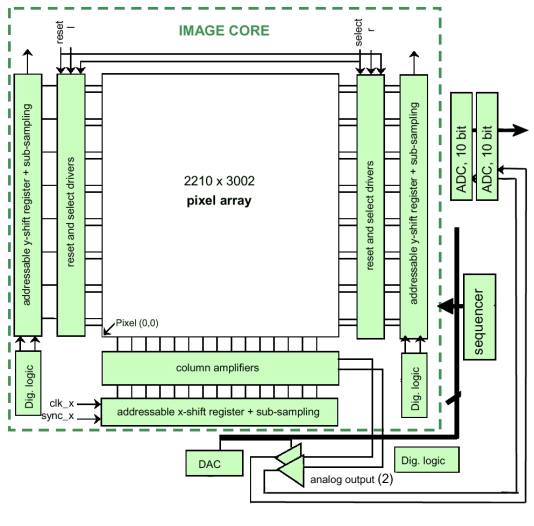
Digital Clock Synthesizer & 8/16-Bit Transfer Modes
A
wide range a master clock frequencies (eg. 7 to 40MHz) can by precisely
generated using the Digital Clock Synthesizer.
The clock rate adjustment can be used to tradeoff speed versus bit depth.
For example, the camera can be programmed to operate at 40MHz (40MB/sec
burst transfer rate) in 8bit mode. Then,
to get 10-bit per pixel, the user can switch to 16-bit mode and operate at 20MHz
and still maintain continuous transfers within the 40MB/sec limits.
Embedded
Microprocessor
A microprocessor in the
camera provides the control interface between the PC and the functional block in
the camera (Sensor, Clock Synthesizer, Register Memory, Channel Link Interface
& Serial port (CameraLink). The
Microprocessor receives commands thru the LVDS level serial port and issues
commands to the other devices. It
also can store preset values for camera setting, which can be recalled with
single ASCII character commands. Several
digital I/O or analog sampling signals are available on the processor from PCB
header points for custom OEM applications.
USB 2.0
High-Speed Interface
The
SI-6600U provide convenient capture using the High-Speed 480Mb/sec USB 2.0
interface. It is a bus-powered unit, consuming less than 500mA at 5VDC and will
operate without any external power supply. The precision-machined C-mount
housing includes an integrated tethered USB cable and optional 3-pin
trigger/strobe connection. For OEM board level configurations, two General
Purpose Outputs are accessible; Pull-Up and pull-down driven transistors to be
used to control light sources and switches. A USB
driver is provided which provides additional functionality for
high-speed image capture and event notification.
Sample Test Images (2200 x 3000)

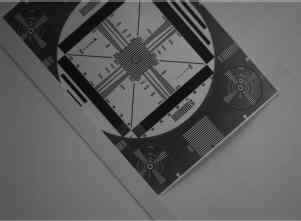
Click
on images to
enlarge
Click on images to enlarge (raw bayer)
6.6MP Mono Full Size Image- 2.5MB & 1.7MB JPG! (click)
